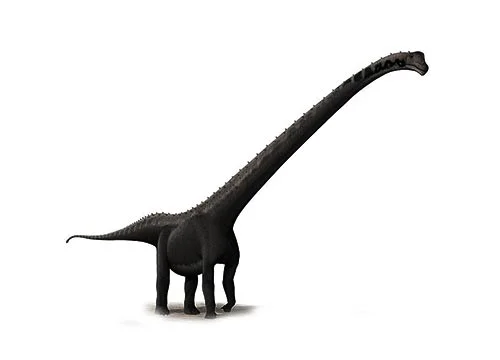Qijianglong (dragon of Qijiang)

Ke-je-ang-long
L. Xing, T. Miyashita, J. Zhang, D. Li, Y, Ye, T, Sekiya, F. Wang & P. Currie - 2015
Herbivore
Estimated 15 meters long
Sauropod
Q. guokr (type)
China - Suining Formation
Late Jurassic, 160 million years ago
Qijianglong Facts
Qijianglong, meaning “dragon of Qijiang,” is a genus of long-necked sauropod dinosaur that lived in what is now China during the Late Jurassic period, approximately 160 million years ago. It was first described in 2015, based on a nearly complete skeleton that was discovered in Qijiang City, Chongqing Municipality.
Qijianglong was a relatively small sauropod, estimated to have been around 15 meters (50 feet) long and weighing up to 15,000 kilograms (33,000 pounds). It belonged to the family Mamenchisauridae, which includes a group of long-necked sauropods that lived in China during the Jurassic and Cretaceous periods.
One of the most remarkable features of Qijianglong was its neck, which was around 10 meters (33 feet) long and comprised of 15 vertebrae. This is an unusual number for a sauropod, as most have between 12 and 14 neck vertebrae. In addition, the vertebrae of Qijianglong were elongated and had unique features, including large cavities and unusually wide neural spines.
These adaptations suggest that Qijianglong had a specialized feeding behavior, perhaps using its elongated neck to reach vegetation that was out of reach of other herbivores. The wide neural spines may have also provided support and protection for the neck, allowing it to be more flexible and maneuverable.
Overall, Qijianglong is an important addition to the fossil record of long-necked sauropods and sheds new light on their evolution and diversity in China during the Jurassic period. Its discovery underscores the importance of continued paleontological research in China, which has become a leading center for dinosaur discoveries in recent years.



